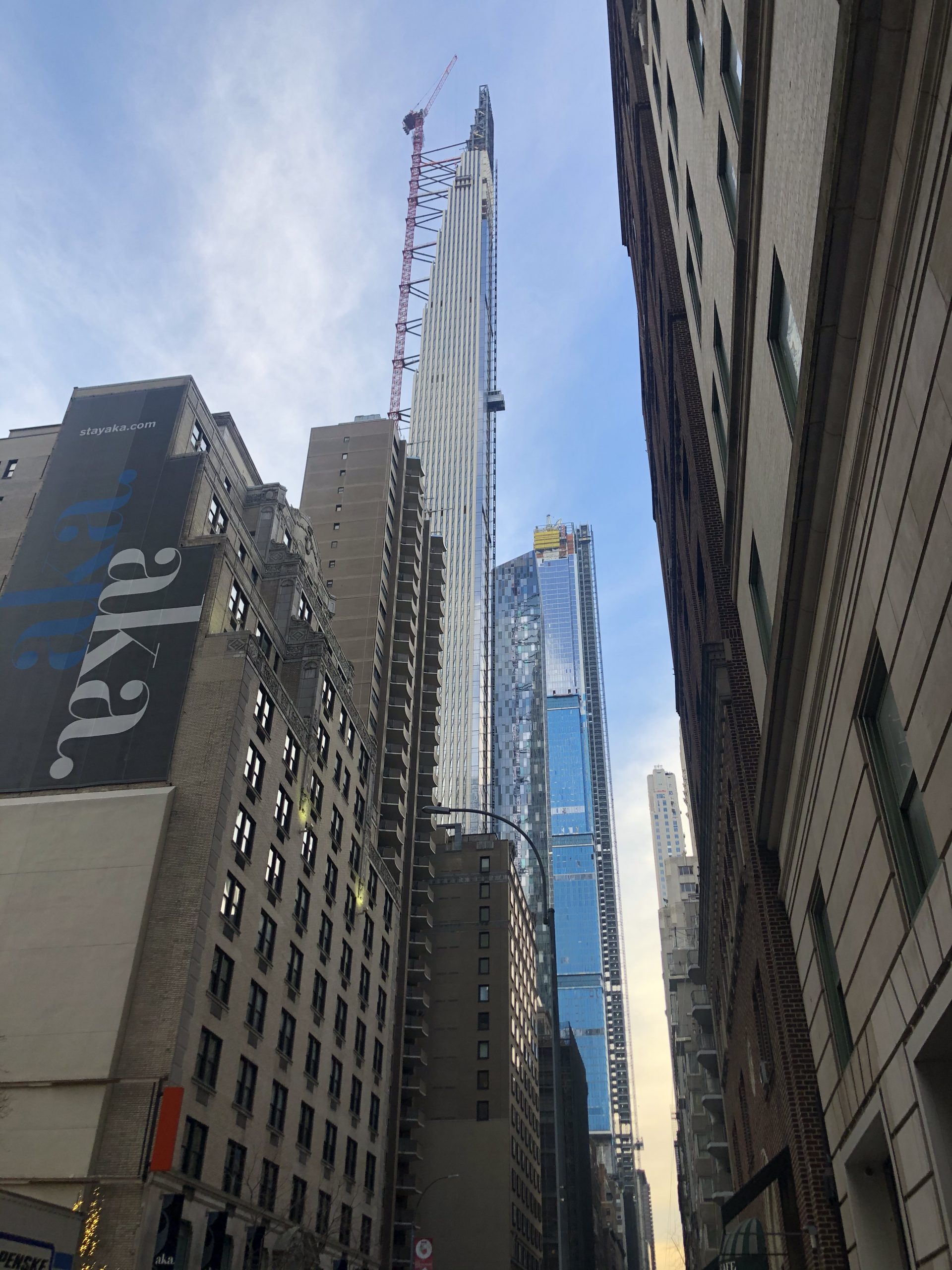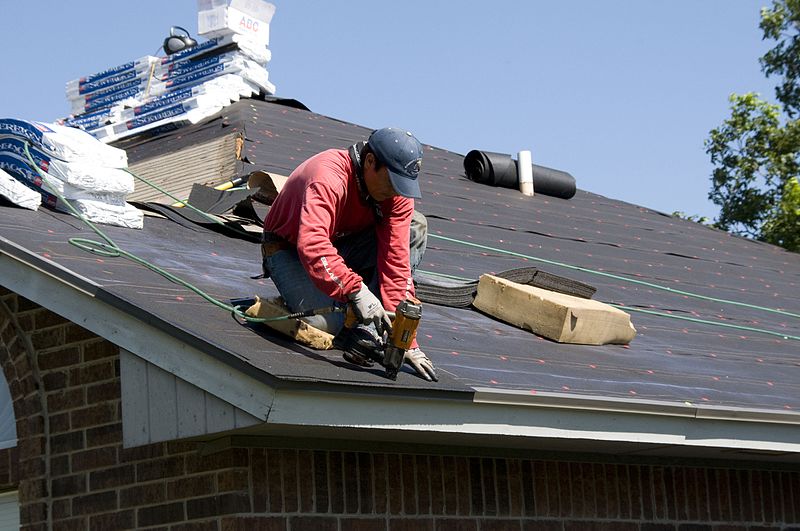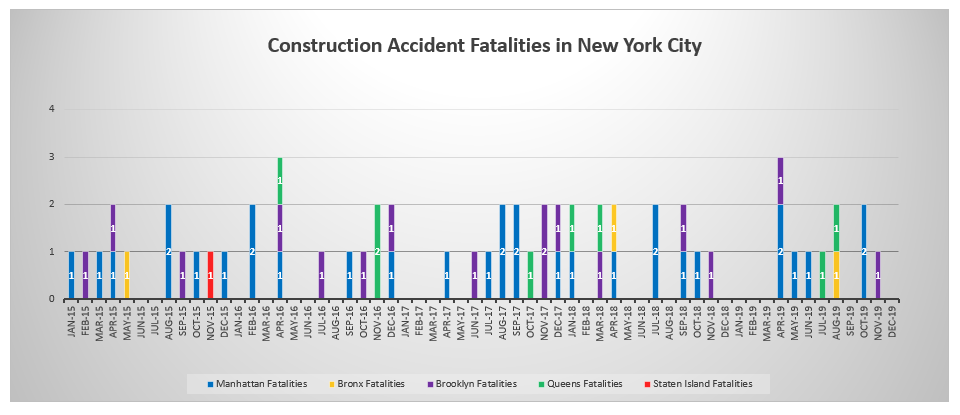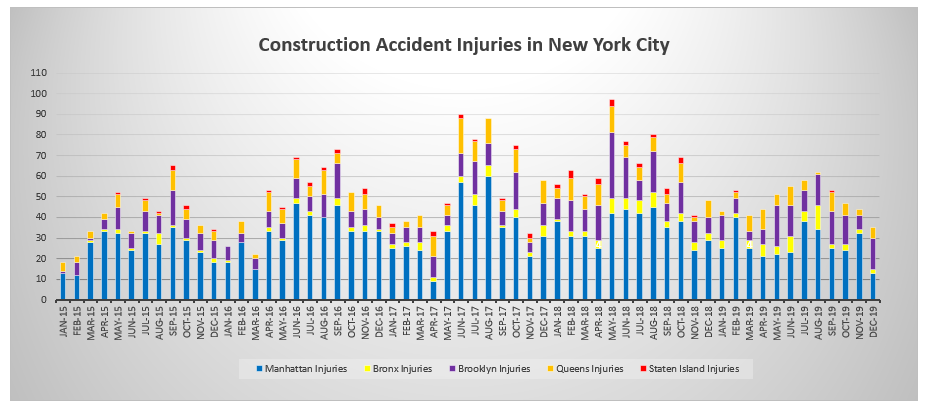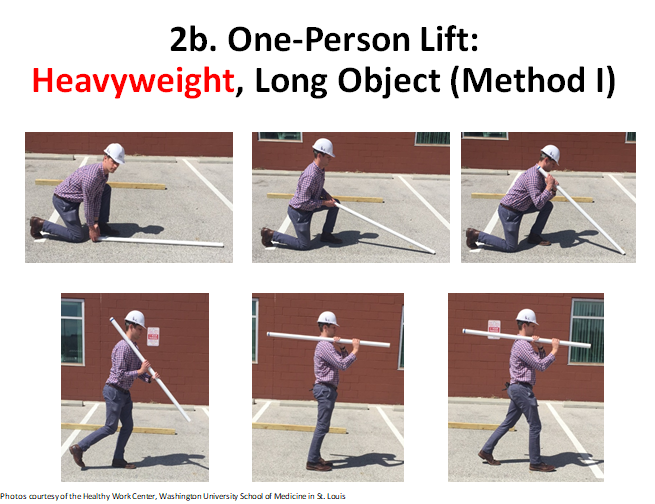1 worker died and 158 others were injured on construction sites in New York City during the first quarter of 2020 compared to respectively 0 and 137 for the same period of 2019. When looking at a 5 year period, the first trimester of 2018 was the worst for New York City construction workers with 170 of them sustaining injuries and 3 of them dying in accidents.
Most accidents resulting in injuries occurred in Manhattan with 96 workers injured, followed by Brooklyn, 35, Queens, 14 and the Bronx, 13. No injuries were reported in Staten Island during the first trimester. With the exception of Staten Island all other boroughs recorded an increase in construction accident injuries during the the first 3 months of this year compared to the same period a year earlier.
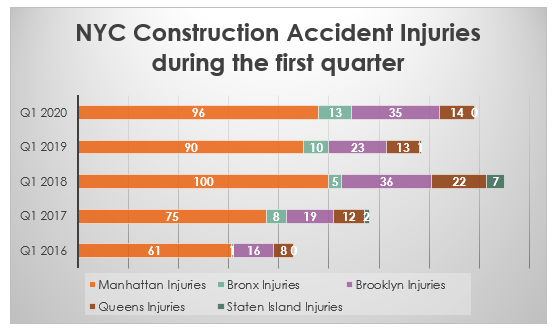
Working on construction sites is one of the most dangerous activities in New York and in the US. The Department of Buildings classify injuries in 6 different categories. The largest category is “Other”. Injuries in this category are usually not life threatening or not critical. Many of them are small cuts and lacerations that do not require ambulance transportation or hospitalization. Most of the time a visit to an emergency call center is sufficient to treat the injury. It is also rare that a safety violation is issued after these types of injuries. The second largest category of NYC construction accident injuries are injuries related to falls. Falls often result in serious injuries. An ambulance is often called and workers end up most of the time at the hospital after a fall. Most fall injuries could be prevented if workers were fully protected. During the first quarter of 2020, 45 hart hats were injured in falls in New York. This is the highest number of fall injuries recorded during the first quarter over the last 5 years. Another very common cause of injuries is when material fell onto workers. 12 workers were injured in that manner during the first three months of the year compared to respectively 22, 21, 23 and 10 during the same period of 2019, 2018, 2017 and 2016. 6 people were also injured in scaffolds accidents and 2 sustained injuries related to mechanical construction equipment.
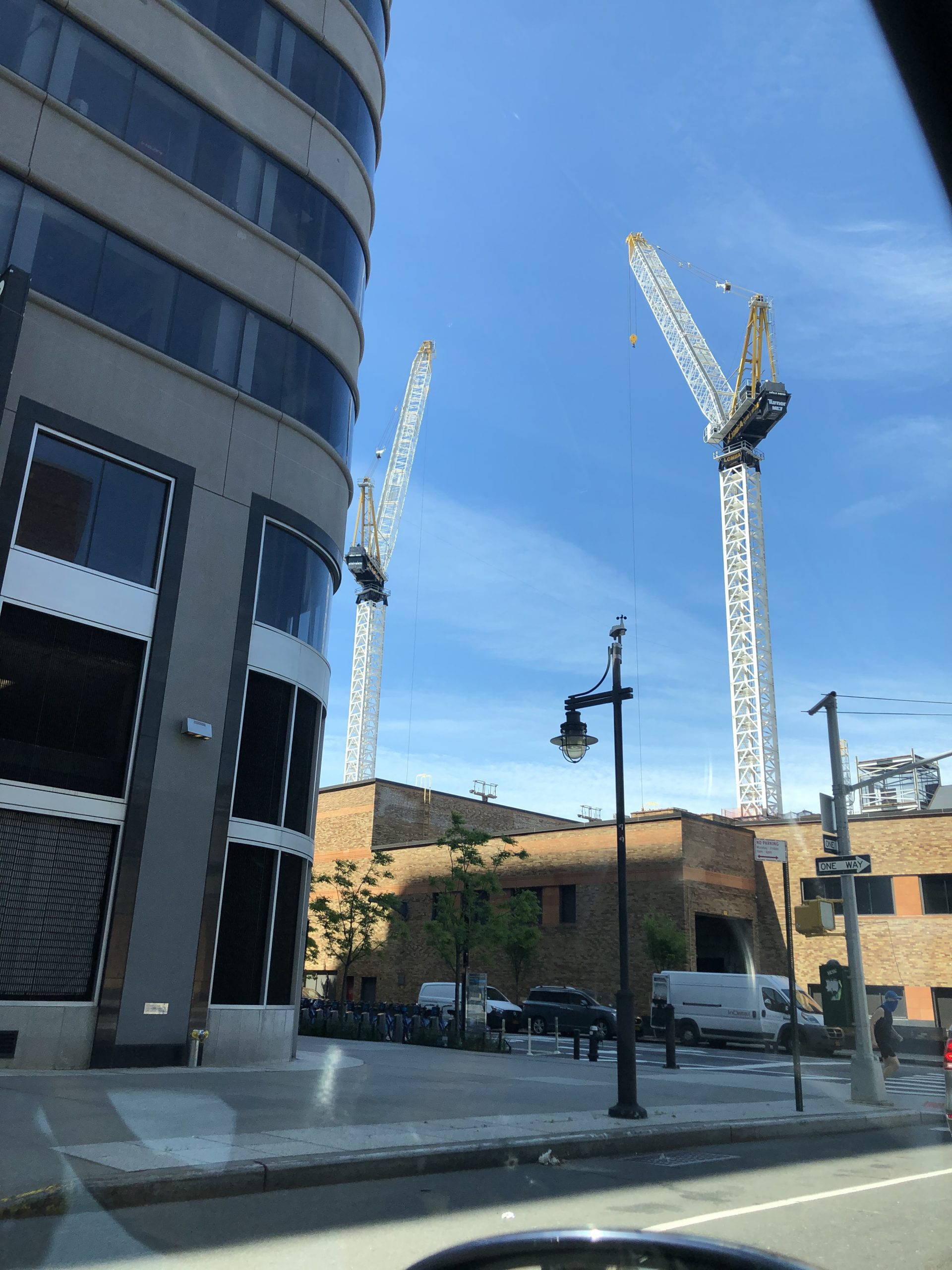 In NY State, it is the responsibility of the contractor and/or of the owner of the construction site to make sure their construction workers are safe at work.
In NY State, it is the responsibility of the contractor and/or of the owner of the construction site to make sure their construction workers are safe at work. New York Personal Injury Attorneys Blog
New York Personal Injury Attorneys Blog


